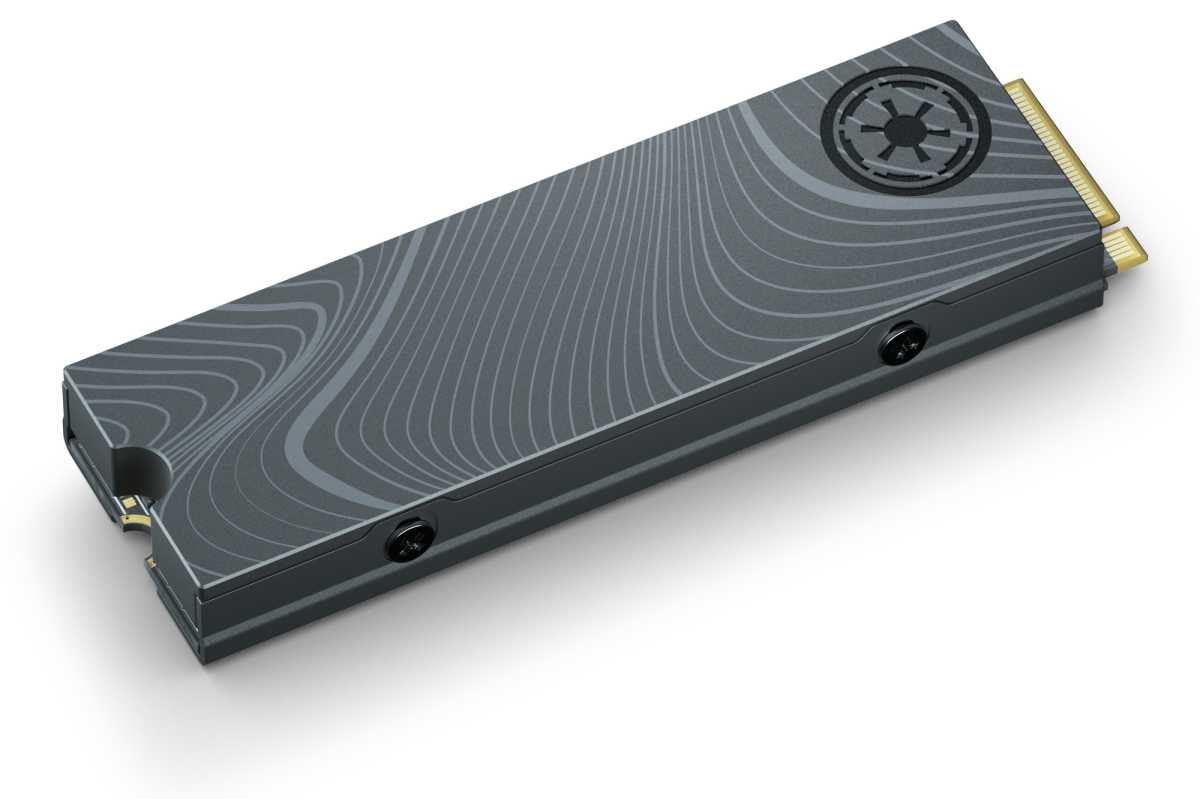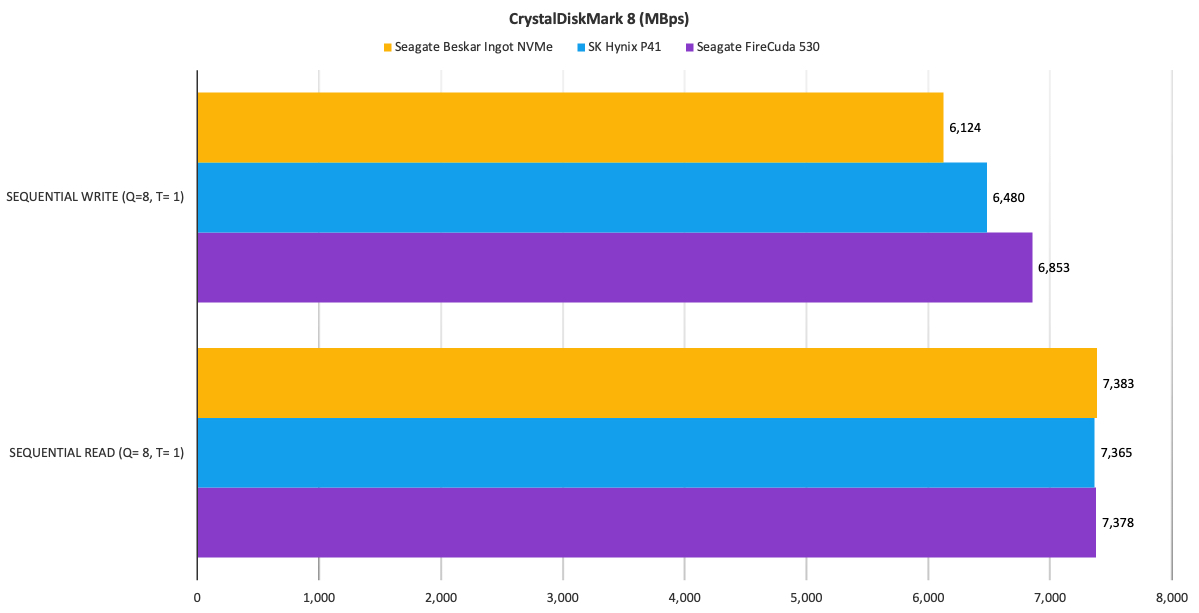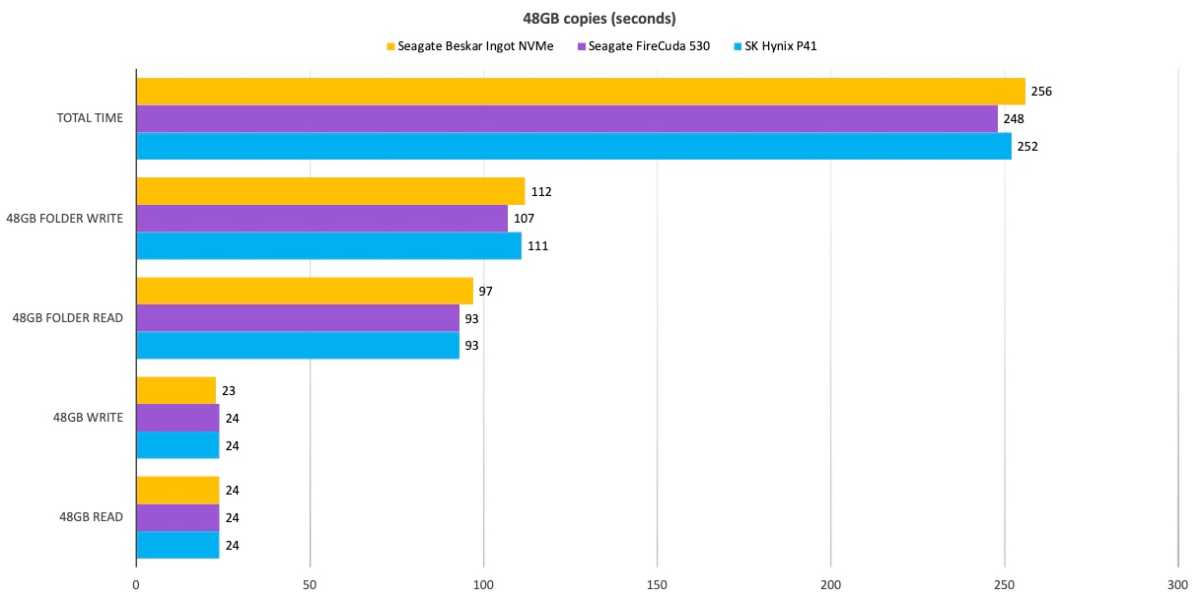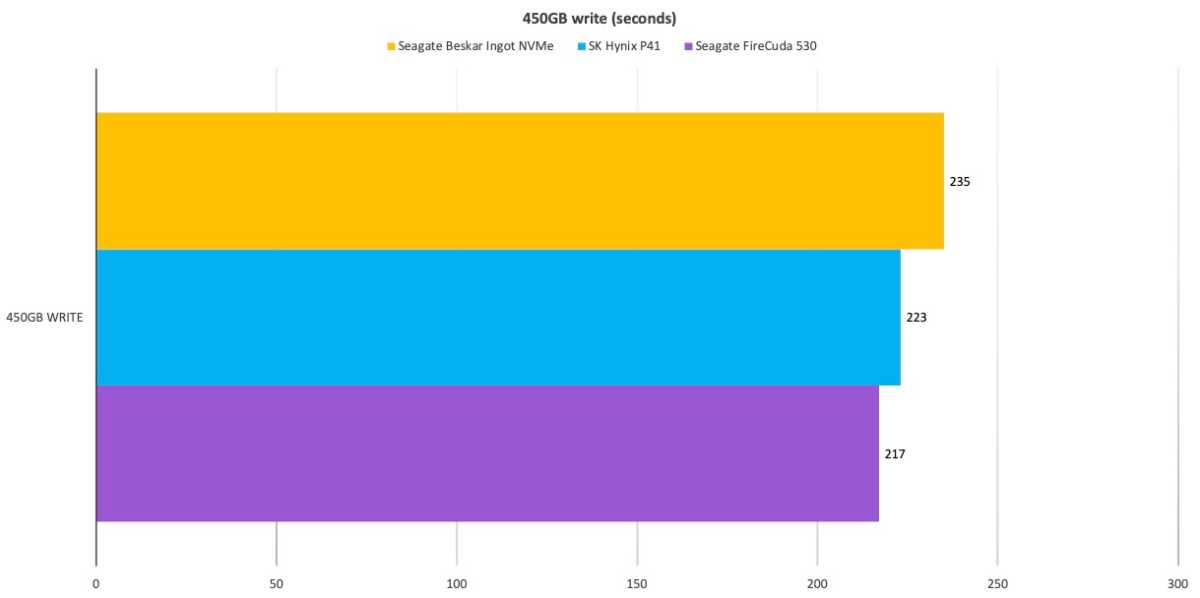 At a glance
At a glance
Expert’s Rating
Pros
- Exceptional performance
- Long warranty with a high TBW rating
- Beefy Star Wars-themed heatsink
Cons
- Pricier than a plain FireCuda 530
Our Verdict
For fans of the Mandalorian (aka the spaceman with no name), this themed version of the FireCuda 530 will have appeal. It’s the same super-fast performer, and you don’t pay a lot for the looks.
Price When Reviewed
$168 for 500GB | $273 for 1TB
Best Prices Today: Seagate Beskar Ingot NVMe SSD (FireCuda 530)

$119.99
Free

$179.99
Free
It’s always nice when there’s substance behind a beautiful or handsome facade. In the case of the Seagate Star War’s-styled Beskar Ingot NVMe drive, it’s especially pleasant because the substance of which I speak is the FireCuda 530—one of the fastest NVMe drives we’ve ever tested. We of course put this latest version through its paces and yup…substance.
This review is part of our ongoing roundup of the best SSDs. Go there for information on competing products and how we tested them.
Design and specs
The Beskar Ingot NVMe is a 2280 (22mm wide, 80mm long) PCIe 4.0 x4, M.2 SSD. It’s available in both 500GB and the 1TB version we tested. The 1TB model features 1GB of SK Hynix DDR4 primary cache, a Seagate-vetted Phison PS6108 controller, and 176-layer 3D Micron TLC (Triple-Level Cell/3-bit) NAND. All fast, long-lasting components.
The most salient difference between the Beskar Ingot and the plain FireCuda 530 is the themed heatsink. It’s styled to look like a slab of the precious fantasy metal so sought after in The Mandalorian TV series. Evocative if you’re a fan.

Oddly enough, the prices Seagate quoted me for Beskar Ingot: $273 for the 1TB, and $168 for the 500GB, are slightly lower than for the regular FireCuda 530 with a heatsink ($275 and $170, respectively). A FireCuda 530 with only the stock heat spreader is $255 and $150. Unlike with the SATA version of the Beskar Ingot, you’re basically paying extra for the heat sink, and getting a discount for style. Go figure. Note that prices change, so investigate on your own before purchase.
The FireCuda 530 in any form is a top-tier PCIe 4.0 drive with an uncompromising design (DRAM, fast NAND, etc.), and as such, will cost more than second-tier and bargain drives.
The Beskar Ingot NVMe carries the same reassuring five-year warranty and three-year data-recovery service of the SATA version we recently reviewed. However, it carries a far more substantial TBW (terabytes that may be written) rating of 1,270TBW per 1TB of capacity—more than twice that of the SATA drive. In this case, the assurance is real!
Of course, whether you’ll be able to enjoy the looks after you install the drive completely depends on your system. If you have a window for observing your RGB and other internal workings, good deal. If not, then it’s your mind’s eye!
Performance
To say we were surprised at the Beskar Ingot NVMe’s performance would be an outright lie. We’ve already seen what the FireCuda 530 can do so this drive was no surprise. It does, however, reveal the difference that capacity makes in certain areas of performance. The 1TB Beskar Ingot 530 is very fast, but it still lags behind the 2TB SK Hynix P41 and 2TB FireCuda 530.
Why should capacity matter? In this case, there’s half the DRAM and NAND, so caching isn’t as effective with long writes. There are also fewer NAND chips to spread writes across. Normally, the effect of the latter is mild until your drop to the 256GB models, but it’s noticeable in the CrystalDiskMark 8 test shown below, and affects all SSDs to some extent, no matter what the brand.

As you can see below, the Beskar Ingot NVMe was fast in our real-world transfers, if again, not as fast as the 2TB competition.

The 450GB write was a tad less smooth with the 1TB Beskar Ingot than the 2TB FireCuda 530. As if the controller was reassigning more NAND for writing TLC as SLC on the fly. (Ya’ think?)

The Beskar Ingot version of the FireCuda 530 is a fast SSD. But not shipping in 2TB or 4TB flavors means you can’t get absolute best-in-show performance with the themed heatsink. We’re fairly confident, however, that it’s the equal of any other 1TB model currently shipping if that’s the capacity you’re shopping for.
Internal drive tests currently utilize Windows 11, 64-bit running on an MSI MEG X570/AMD Ryzen 3700X combo with four 16GB Kingston 2666MHz DDR4 modules (64GB), a Zotac (Nvidia) GT 710 1GB x2 PCIe graphics card, and an Asmedia ASM3242 USB 3.2×2 card. Copy tests utilize an ImDisk RAM disk using 58GB of the 64GB memory.
Each test is performed on a newly formatted and TRIM’d drive so the results are optimal. Over time, as a drive fills up, performance will decrease due to less NAND for caching and other factors.
The performance numbers shown apply only to the drive in the capacity tested. SSD performance can vary by capacity due to more or fewer chips to shotgun reads/writes across as well as the amount of NAND available for secondary caching.
Bottom line
The Beskar Ingot is a great NVMe SSD, but so is the slightly cheaper, plain-Jane FireCuda 530. It’s my job to point out that you’re paying for a heatsink you might not need unless you’re constantly slamming large amounts of data onto the drive. If you do need the heatsink, then the Beskar version is actually a hair cheaper. By all means.
Stay connected with us on social media platform for instant update click here to join our Twitter, & Facebook
We are now on Telegram. Click here to join our channel (@TechiUpdate) and stay updated with the latest Technology headlines.
For all the latest Technology News Click Here
For the latest news and updates, follow us on Google News.
